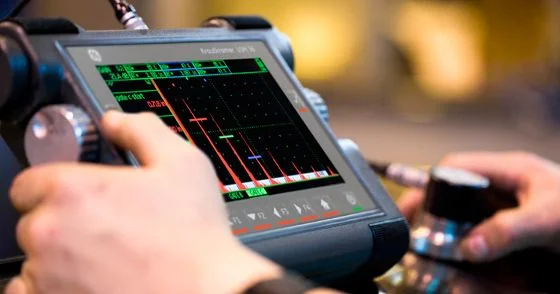The Advancements in Non-Destructive
Ultrasonic Testing (UT) Welding
Introduction:
In the realm of welding, precision is paramount. As industries strive for efficiency and reliability, the
significance of Non-Destructive Testing (NDT) methods, particularly Ultrasonic Testing (UT),
cannot be overstated. This article explores the evolution and application of Non-Destructive
Ultrasonic Testing Welding, shedding light on its benefits and the technological strides that have
propelled it to the forefront of quality assurance in welding processes.
The Essence of Non-Destructive Ultrasonic Testing (UT) Welding:
Non-destructive testing methods are pivotal in ensuring the integrity of welded components
without causing damage. Among these, Ultrasonic Testing stands out as a non-intrusive technique
that utilizes high-frequency sound waves to inspect welds thoroughly. This approach not only
safeguards the structural integrity of the weld but also contributes to cost-effectiveness by
minimizing the need for post-weld inspections that might lead to material wastage.
Technological Advancements Driving UT Welding Precision:
Recent years have witnessed significant advancements in UT Welding technology. Improved
transducer design, enhanced signal processing algorithms, and the integration of artificial
intelligence have collectively elevated the precision and reliability of UT Welding inspections.
These innovations enable inspectors to detect and analyze flaws, such as cracks or inclusions,
with unprecedented accuracy, ensuring that even the minutest imperfections do not compromise
the weld’s functionality.
Applications Across Industries:
Non-Destructive Ultrasonic Testing Welding has found applications across diverse industries,
ranging from aerospace to oil and gas. The ability to assess weld quality without causing damage
makes it an invaluable tool in ensuring the safety and longevity of critical structures. Industries
benefit not only from the increased reliability of welds but also from the time and cost savings
associated with streamlined inspection processes.
Challenges and Future Prospects:
While Non-Destructive Ultrasonic Testing Welding has come a long way, challenges persist,
including the need for standardized procedures and the continuous training of inspectors.
Looking ahead, ongoing research and development in ultrasonic sensor technologies, coupled
with advancements in data analytics, promise even greater precision in identifying and
characterizing weld defects. This paves the way for a future where Non-Destructive Ultrasonic
Testing Welding becomes an indispensable aspect of welding quality control.
Conclusion:
Non-Destructive Ultrasonic Testing Welding stands as a testament to the relentless pursuit of
precision and reliability in welding processes. As industries embrace this non-intrusive inspection
method, the synergy between technological advancements and quality assurance fosters a
landscape where welds not only meet but exceed the stringent standards of safety and efficiency.
In the dynamic world of welding, Non-Destructive Ultrasonic Testing emerges as a cornerstone,
ensuring that each weld is a masterpiece of precision and durability.
